Article updated 28.11.2022
Using Teams effectively in meetings requires meeting organizers, or facilitators, to be systematic in activating meeting participants. Take advantage of Teams meeting activation tips and improve the productivity of Teams meetings.
The use of Microsoft Teams is at the heart of remote and hybrid work, and certainly everyone is familiar with at least its meeting features. However, many employees find working days of multiple meetings difficult and stressful. By the afternoon, the Teams coma will start sneak into the participants in the middle of all the information overload.
Also, for meeting organizers, Teams meetings, as well as their planning, management, and follow-up coordination, can be a heavy routine — or perhaps a heavy one precisely because of the lack of a routine. Motivation and concentration of presenters and organizers as well as participants may be weakened.
The most influential factor in this is the lack of gestures, expressions, and presence of participants that create most of the interaction between people, in remote meetings. Building trust, community and openness are key to smooth remote working and collaboration. Capture tips for activating meeting attendees and turn Teams meetings into productive collaboration moments.
Tip 1: Breakout rooms in Teams meetings
The Breakout rooms feature allows up to 300 meeting participants to be divided into smaller groups in separate enclosed spaces. The spaces are like mini meetings where smaller groups can discuss and brainstorm in their own peace, for example as part of a workshop. This can help conversations work more fruitfully in very large groups.
The meeting organizer can jump between different breakout rooms, for example to remind them of the time left. At the end of the small group work in breakout rooms, the organizer can bring the participants back to the main room of the meeting.
You can select small group modes after joining a meeting from the two-square icon on the left side of the three-point menu. From the settings, select the number of rooms you need and if you want to divide the participants into groups manually or automatically.
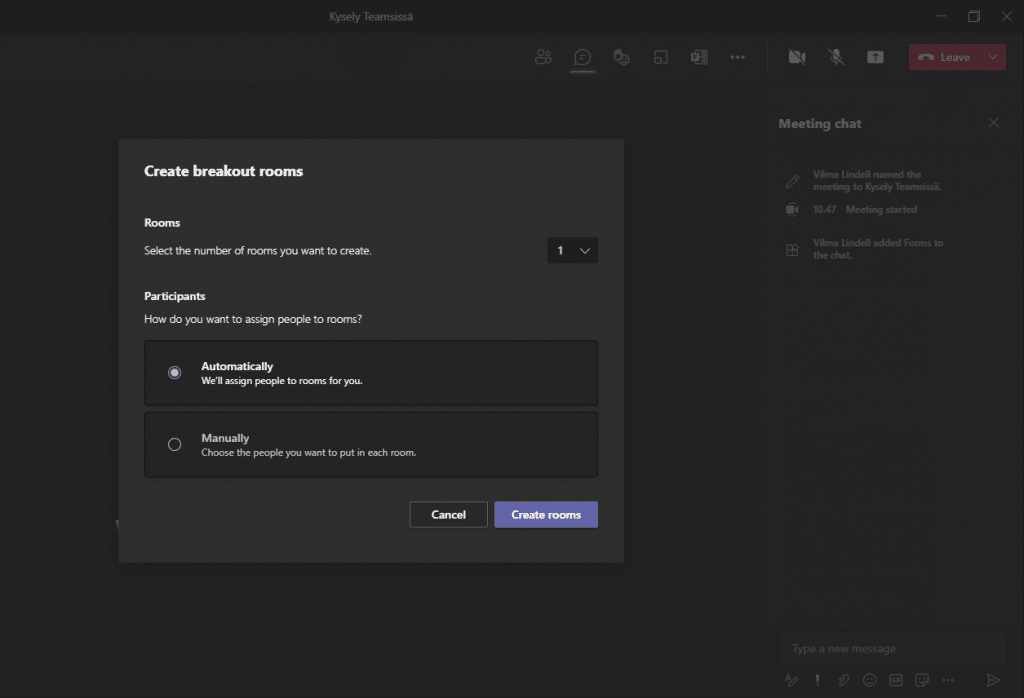
Tip 2: Whiteboard
Maintaining a creative process such as workshop work is made easier with the help of a whiteboard. All participants in the meeting can participate in the work on the whiteboard. The ideation and development of the new is supported by sticky notes, text objects and other simple tools. The meeting organizer can also present the content of the draft notebook without the other participants being able to edit the content.
You can find the whiteboard on the meeting tabs. You can also open a whiteboard in your own desktop application. From the options menu in the upper right corner, you can add images and specify if other participants can edit the whiteboard.
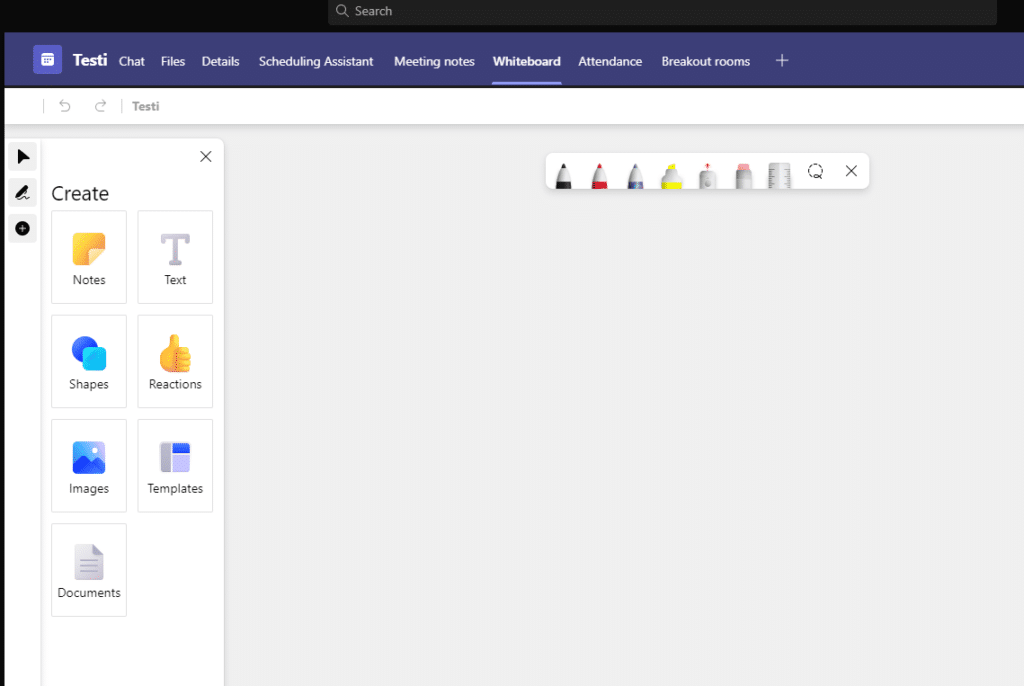
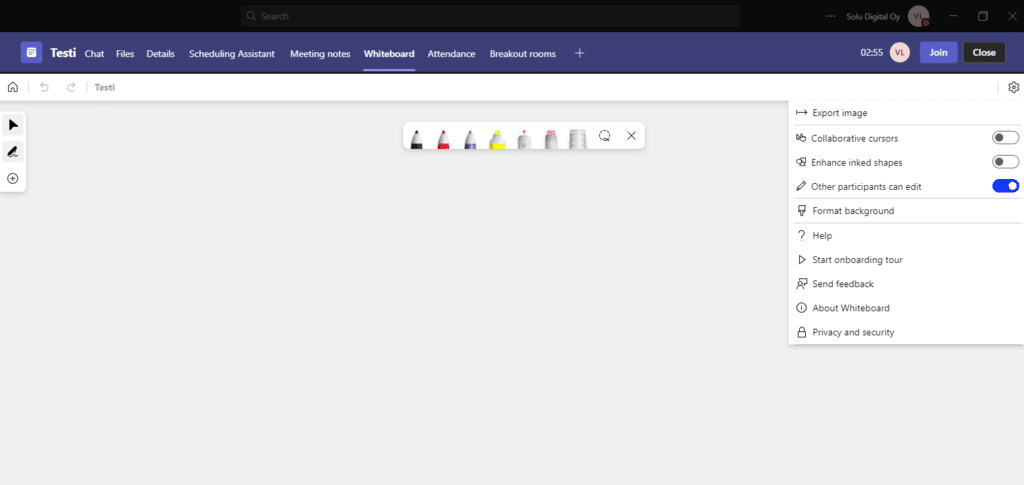
Tip 3: Polls and surveys with Forms
Forms surveys support quick and smooth decision-making, as all meeting participants can influence with their opinions. Surveys, polls and questionnaires can be created, published, and viewed with answers before, during, and after the meeting. Polls can be answered from all devices to activate passive listeners.
The announcement of the publication of the poll will appear in the participants’ meeting window and in the discussion of the meeting. Organizers and presenters can specify whether the responses are anonymous or not and close the poll from voting. The answers to the surveys are visible to everyone in real-time. Meeting participants can still answer open questions after the meeting. The survey results can be downloaded as an Excel file for further processing.
Adding a poll function to a Teams meeting
Add the Forms survey as a new tab in the meeting window with the + button.
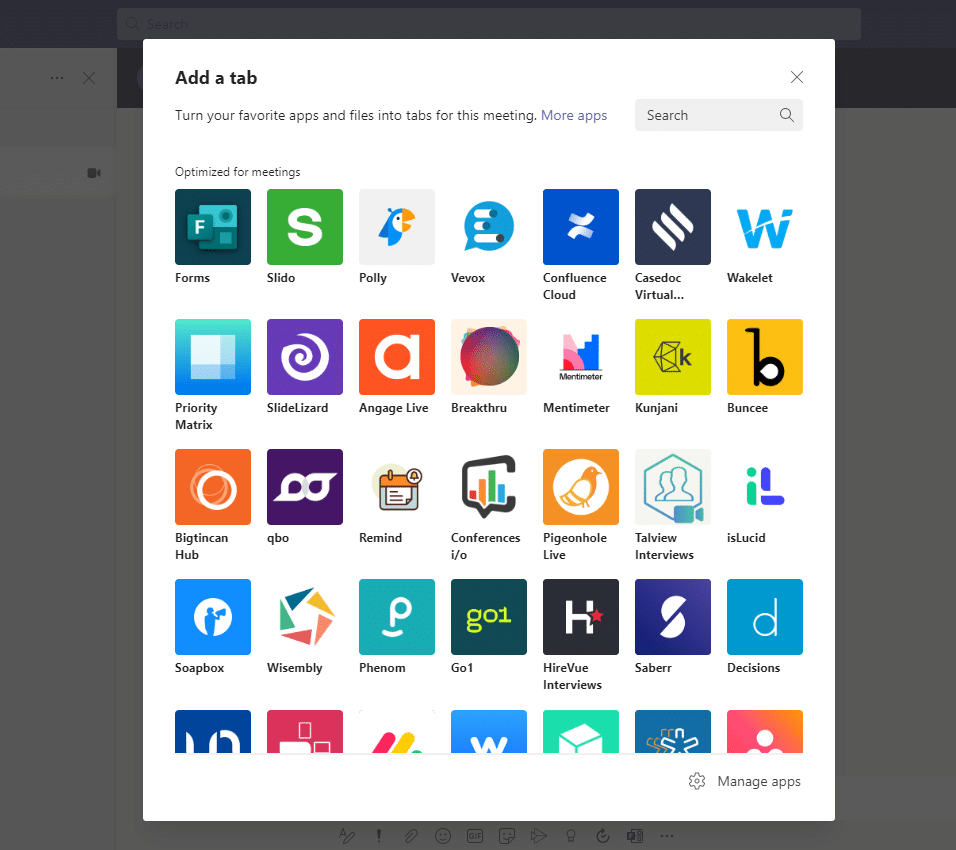
Click Forms in the application menu that opens.
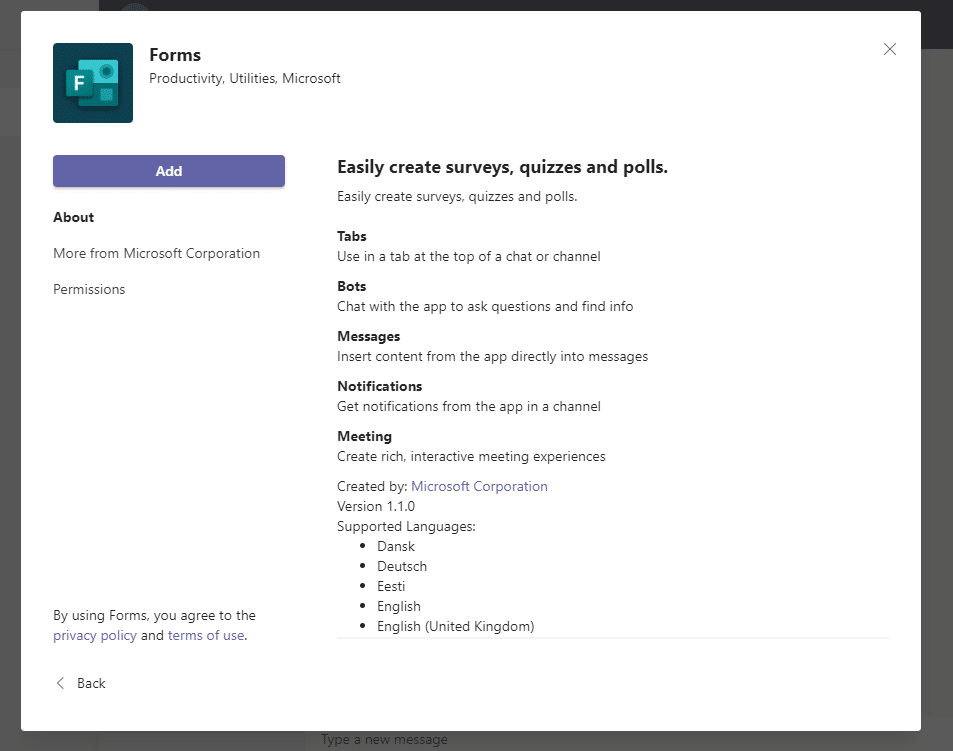
A new window will open, click Save to confirm your selection.
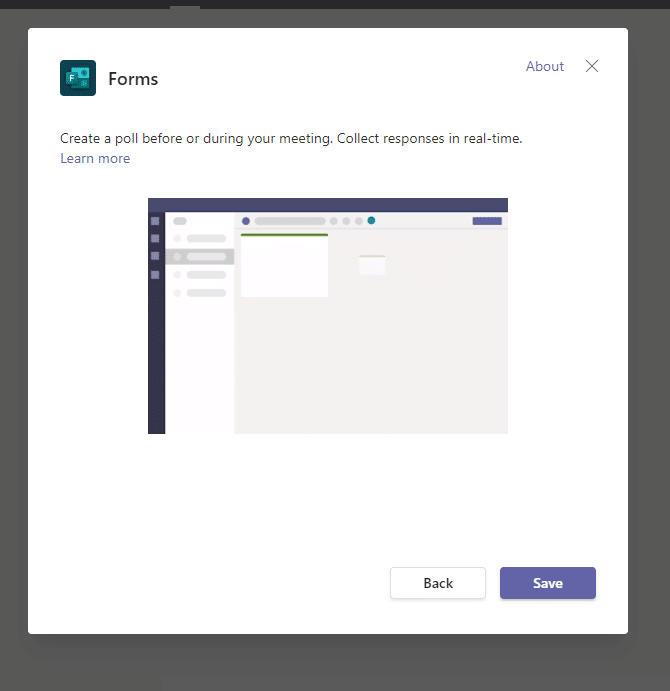
A new tab called Polls will appear in the Teams meeting window. Click Create New Poll to begin creating the query.
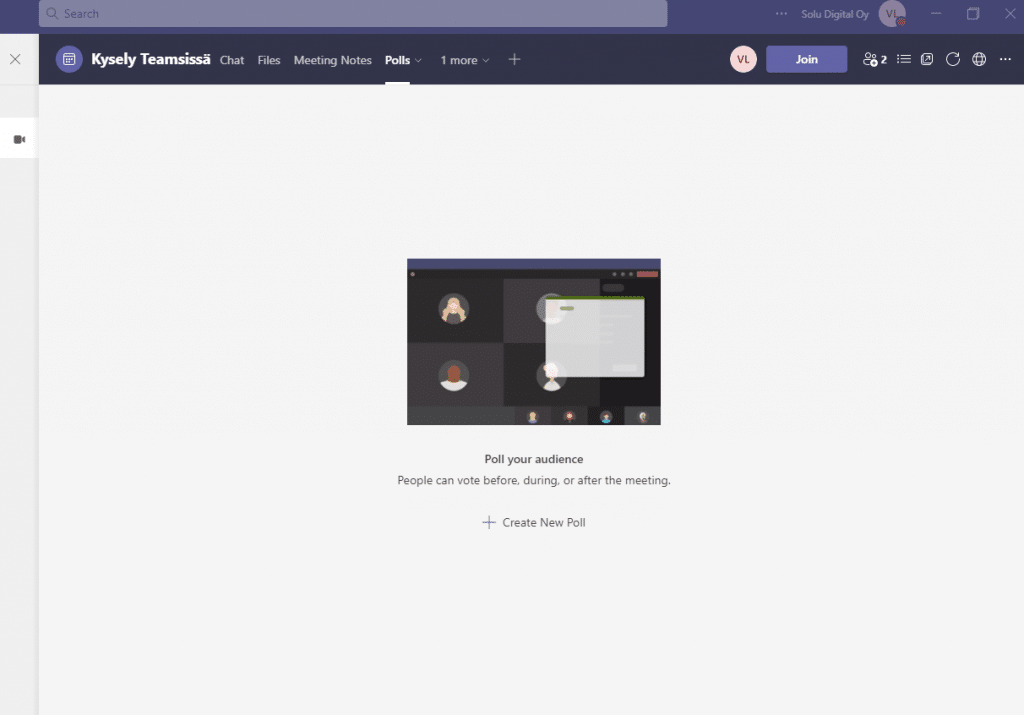
Creating a poll
Poll creation is easy and fast with various settings, such as:
- Allow multiple answers
- Allow anonymous responses
- Allow co-editing of the poll; all participants can edit the survey, or only the meeting organizer and co-presenters can edit the survey
- Sharing results with meeting participants after the survey is closed

After clicking Save, Teams creates a view of your draft survey.
Poll editing, publishing and response management functionalities
In the draft poll view, you can:
- Start a poll
- Edit the poll
- Delete the poll
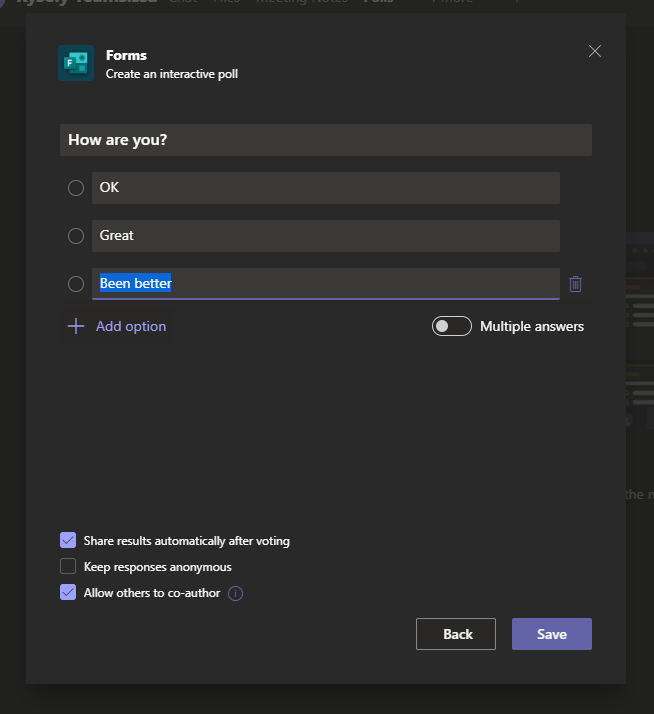
After clicking Save, Teams creates a view of your draft survey.
Poll editing, publishing and response management functionalities
In the draft poll view, you can:
- Start a poll
- Edit the poll
- Delete the poll
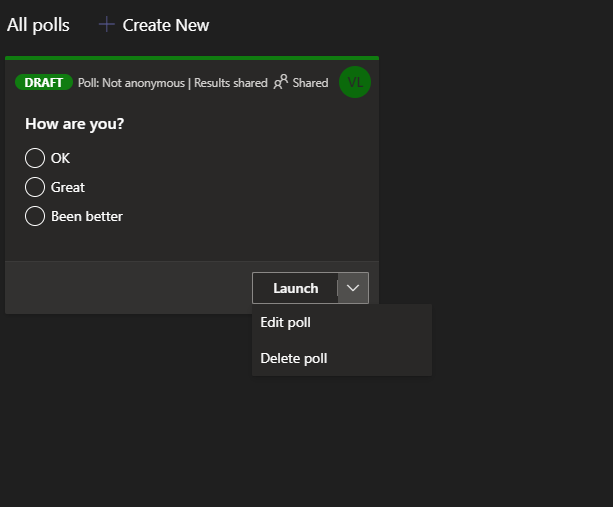
After launching the poll, Teams will notify you in the discussion section of the meeting window.
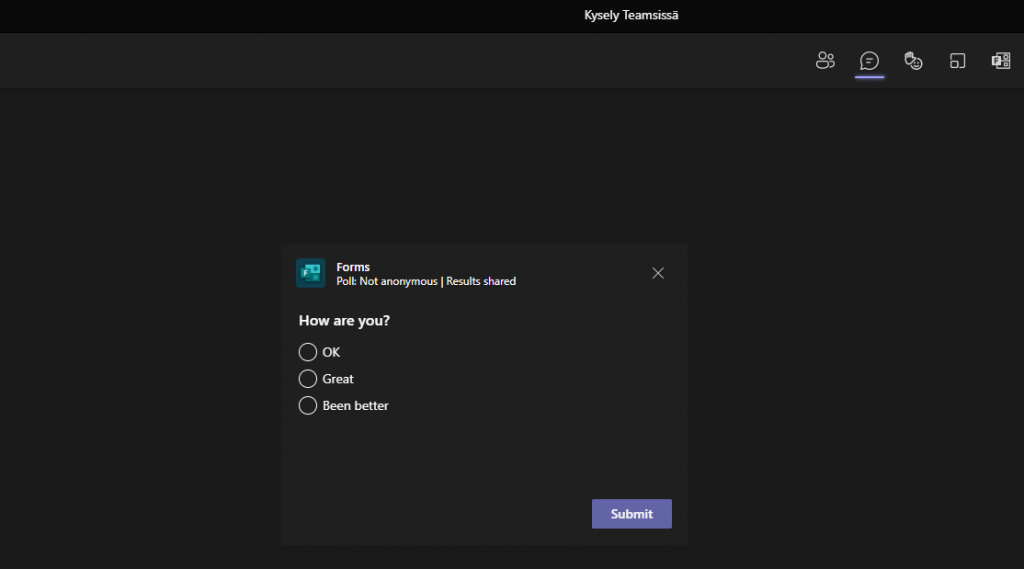

In the active poll view, you can:
- View results
- Export the results to an Excel spreadsheet that automatically downloads to your device’s specified location for Teams downloaded files
- Close the poll
- Delete the poll
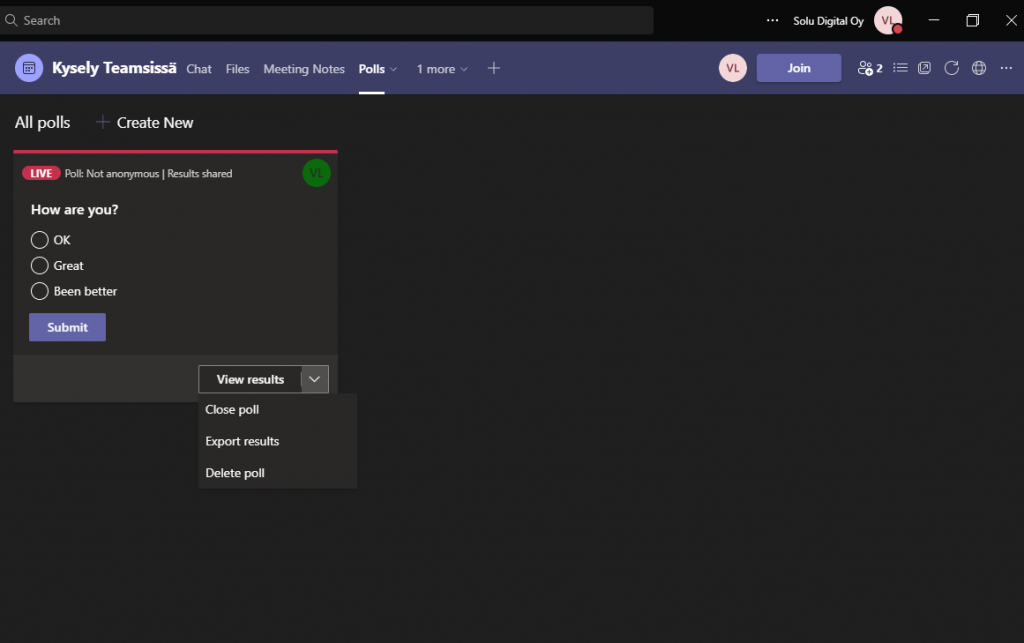
You can see the answers saved to the poll directly in the same window by clicking View results.
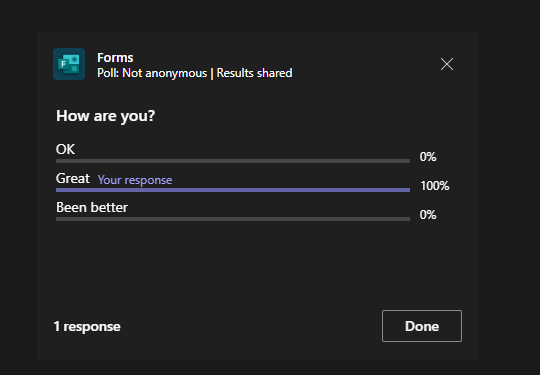
In the closed poll view, you can:
- View results
- Export the results to an Excel spreadsheet that automatically downloads to your device’s specified location for Teams downloaded files
- Reopen the poll
- Delete the poll
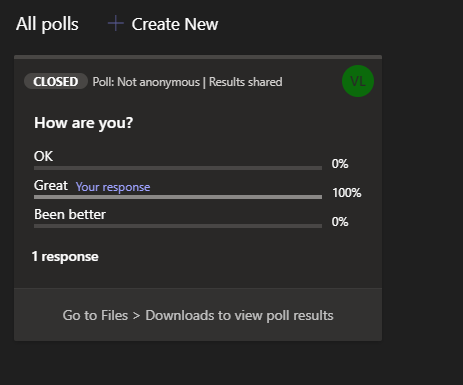
Viewing poll results in Excel
Teams exports the results of the poll to an Excel file, which is uploaded to the file folder that you have specified in the Teams settings as the file download folder.
The Excel spreadsheet neatly displays the results of the poll in its own columns, speeding up the sharing of information with relevant stakeholders. Decision-making speeds up and work becomes more efficient when the information gathered through polls and surveys can be utilized in real-time during the meeting.

Tip 4: Engage everyone involved
Teams’ versatile functionalities provide handy tools to help activate participants in different types of remote meetings. Different policies and practices also help keep participants active during meetings.
In the case of a workshop aimed at creating something new, participants can be divided into pairs or small groups to solve a specific issue or answer a question. After a certain period, the pairs and small groups come together as each pair or group presents their own findings or answers in turn.
At a regular weekly or monthly meeting, speakers may be informed in advance on the agenda for the next meeting. In this way, the activation of participants can be shared systematically, as part of a permanent approach that each participant is able to prepare for in advance.
Also in ad hoc meetings, it is worth giving the floor to each participant individually, in pairs or in small groups. As the meeting presenter, make sure everyone gets to speak up and remind of the use of time as needed to keep the meeting agenda on schedule.
Tip 5: Take the attention away from work matters
In a meeting lasting several hours, it is worth pausing often enough. During breaks, attention can be paid to things outside of work, such as the news topics of the day, the standardized topic of discussion, ie the weather, or just the exchange of everyday news.
At times, a little cheering and distraction from work matters is in place – after all, we are all human beings and work is only a part of our lives. Humor brings nice relief to even the most serious work issues. The simple question “What do you see on your right?” may result in the most fun answers, and you will get to know the participants in a new way while working.
Read more of our tips for effective use of Teams:
- Using Microsoft Teams effectively: 5 Tips for Teams settings
- Using Microsoft Teams effectively: 5 Tips for working with meetings
- Using Microsoft Teams effectively: 5 Tips for a good meeting experience
- Using Microsoft Teams effectively: 5 tips for teams
- Using Microsoft Teams effectively: 5 tips for channels
- Using Microsoft Teams effectively: 5 Tips for creating teams and channels
- Using Microsoft Teams effectively: 5 tips about tabs
- Using Microsoft Teams effectively: 5 tips about bots
- Teams management with Solu 365® workgroup automation
- Automate project management with the Solu 365® tool
Download Microsoft Teams guides
Download our guides to smooth Teams group management and make your organization’s virtual work easier. Leave your contact information and we will send the guides to your email.
Vilma Lindell
Consultant








